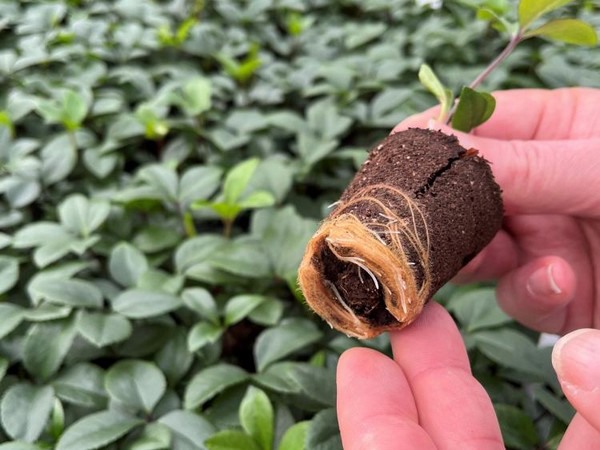"In just six weeks, it should happen, the delivery of Hellebores to customers. Even in the weeks beforehand, it is all hands on deck. After a second year of delivery from the new greenhouse, we can say that the process is running smoothly. A season with strongly rooted, uniform young plants. And lots of new initiatives", says Microflor. In this article, they look back on the season.

ViV® quality label
"Before we look back on a successful season, let's put the star of this blog in the spotlight: our Hellebore. The last plants are now blooming in the garden, then they go into "summer hibernation" until September. Microflor launched the ViV Helleborus label several years ago. Meanwhile, a collection of some sixty hellebore varieties propagated exclusively via tissue culture. This puts us in the quality segment of the market. We take ample time, a minimum of three years, to test the quality and do so at three locations."
"In the first selection, we have a well-rounded list of criteria the varieties must meet. These include flowering richness, plant structure, leaf quality, length of flowering, and so much more. Of all the varieties that come to our judging table, we only approve ten percent. The bar is high, and a new variety must add value. We don't want to copy what's already there, it has to be better."
"If a variety passes an initial selection, it is tested again at different locations, each time under different climate conditions. An important criterion here is the geographical distribution. This is to gather as much information as possible. What else do we pay attention to? Plants must flower within the year. On average, seven months for the earliest varieties (autumn flowering) and eleven months for the later flowering varieties (spring flowering). And they must flower for a long time, i.e., more than three months. Only in the second stage is the variety ready for the wider market. Provided always that all lights remain green in the assessments. An additional condition is that there is a match between the variety and the grower. Because not every variety just randomly leaves for a grower."
"Sustainability is the common thread throughout the process. If a variety is sensitive to, for example, the common fungal disease botrytis, then that species will not make the selection. We look for varieties that are more resistant to this. Our goal? To market only varieties that naturally do what they are supposed to do. That way, we can greatly reduce chemical pesticides and growth regulators."
